
This document provides several activities to guide students through comprehension of a video about the scsience of love.
- Subject:
- Spanish
- Material Type:
- Activity/Lab
- Author:
- Vallarie Sevilla
- Val Sevilla
- Date Added:
- 03/10/2021

This document provides several activities to guide students through comprehension of a video about the scsience of love.
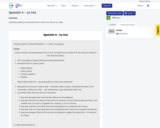
Students prepare and present the tv show "the Voice" for class.
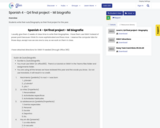
Students write their auto/biography as their final project for the year.
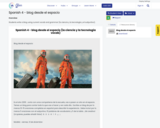
Students write a blog using current vocab and grammar (la ciencia y la tecnología y el subjuntivo).

Theme: Los desafíos mundiales / Community: Venezuela / These Modules are products of a collaboration dedicated to combining resources to create Modules for Spanish AP for face-to-face and online instruction that can be used easily by any teacher, regardless of experience.The modules are designed for consistency and contain four main proficiency-based tasks along with a vocab-builder task, using the tabs across the top. All other items link to tasks that can be used as needed. There are 12 assignments/resources in each Module to choose from.The tasks focus on skills that are needed for the AP Spanish Language and Culture exam, such as making a cultural comparison, citing sources, and replying to an email. There are multiple ideas for discussion to practice conversation and interpersonal communication.

The Big Idea: Kinesthetic learning incorporating programming and language instructionConcept: Programming Bee-Bot while learning school vocabulary and the verb ESTARContext: Students will use the Bee-Bot School Map to talk about the location of various places in the school building and area in Spanish.

The Big Idea: Students will learn about and discuss the importance of private versus public information in Spanish.Concept: Students will address ideas of personal cybersecurity online.Summary: Students will learn cybersecurity vocabulary, discuss the importance of cybersecurity in Spanish using the present subjunctive and commands, and create a cybersecurity dos and don'ts poster in Spanish.

The Big Idea: Students will learn about and discuss the importance of private versus public information in Spanish.Concept: Students will address ideas of personal cybersecurity online.Summary: Students will learn cybersecurity vocabulary, explore cybersecurity concepts through authentic materials, discuss the importance of cybersecurity in Spanish using the present subjunctive and commands, and create a cybersecurity dos and don'ts poster in Spanish.
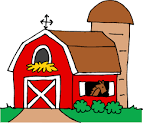
The Big Idea: Kinesthetic learning incorporating programming and language instructionConcept: Programming Bee-Bot while learning rural and farm vocabulary, and using the verb IR-to go, in the preterit tense. Context: Students will use the Bee-Bot Country Roads Mat to talk about the location of various places and animals in the country. They will use the preterit of IR to talk about where someone went.
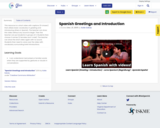
This resource is a short video with captions (if chosen) that utilizes basic vocabulary in greeting and introducing others in Spanish.
The teacher can show this video without any sound to begin. Then the teacher can put students in groups of 3. Students then choose 3 names (2 females and 1 male).
The teacher can show the short video again with no sound.
Students then need to voice over the video with vocabulary surrounding brief introductions.
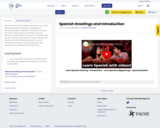
This resource is a short video with captions (if chosen) that utilizes basic vocabulary in greeting and introducing others in Spanish.
The teacher can show this video without any sound to begin. Then the teacher can put students in groups of 3. Students then choose 3 names (2 females and 1 male).
The teacher can show the short video again with no sound.
Students then need to voice over the video with vocabulary surrounding brief introductions.
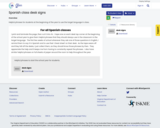
Helpful phrases for students at the beginning of the year to use the target language in class.
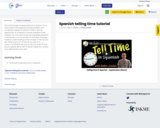
This tutorial helps students tell time in Spanish. It is a direct lesson that explicitly teaches phrases and vocabulary needed to tell time. There is also an opportunity for students to answer questions while viewing.
You may want to put some guiding questions on the board or on an exit slip, for example, to gauge students understanding of the concept.
1) How do you ask "What time is it?"
2) How do you say "It is ___ o'clock"?
3) What is one way to say 12 o'clock?
4) How do you specify AM vs. PM?
5) What makes the 1 o'clock hour different than the rest?

Student municipal swim scholarship article from Mendoza, Argentina's city website. Students are guided through interpretive reading strategies and then are given comprehension questions.
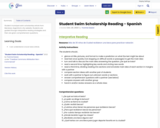
Student municipal swim scholarship article from Mendoza, Argentina's city website. Students are guided through interpretive reading strategies and then are given comprehension questions.

Text includes each chapter of Don Quixote with comprehension questions, difficult words are bolded and provided with synonyms on the margin. Quotes and facts are also provided. Each chapter ends with a fill in the blank summary of the reading.
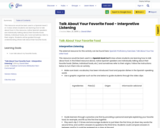
This resource would be best used in a Spanish level 2 or 3 class where students are learning how to talk about food. In the resource, native Spanish speakers are individually talking about their favorite foods (dishes, individual foods, etc.) and sometimes refer to their origins. Students will be guided through understanding others talk about their favorite foods.
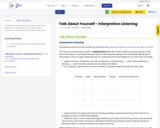
This listening resource of native speakers would be best used in a Spanish level 1 or 2 class where students are learning how to talk about themselves.
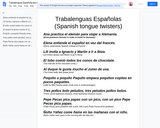
These are some Spanish tongue twisters covering the FIVE (5) vowel sounds as well as the "ll" and "ñ".
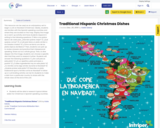
This resource can be used as an anticipatory set to begin a unit on Navidad (Christmas). Ideally, students are familiar with the Spanish speaking countries and where they are located on the map.
Display the image as a warm up activity and have students respond in writing to the following questions:
1) Mira a los platos tipicos de cada pais, ¿Adonde quieres viajar?
2) ¿Qué quieres comer?
3) ¿Cuál país tiene un plato similar a los Estados Unidos?
4) ¿Cómo se llama uno de los platos tipicos de Mexico?
Then, students can pair up to review answers and practice their interpersonal speaking.
Share out as a whole group.
Then, to dive deeper into the image, students can choose a specific dish that they want to research further. Students will answer the following questions:
1) ¿De cuál país es este plato?
2) ¿Es un aperitivo, plato principal, o postre?
3) ¿Cuáles ingredientes hay en este plato?
4) ¿Tu familia come algo similar durante la Navidad?
5) ¿Quieres probar este plato?
6) Describe un plato tradicional que tu familia come en Navidad?
A follow up or culminating activity can be for students to make a dish from a particular country to share with the whole class at the end of the unit.